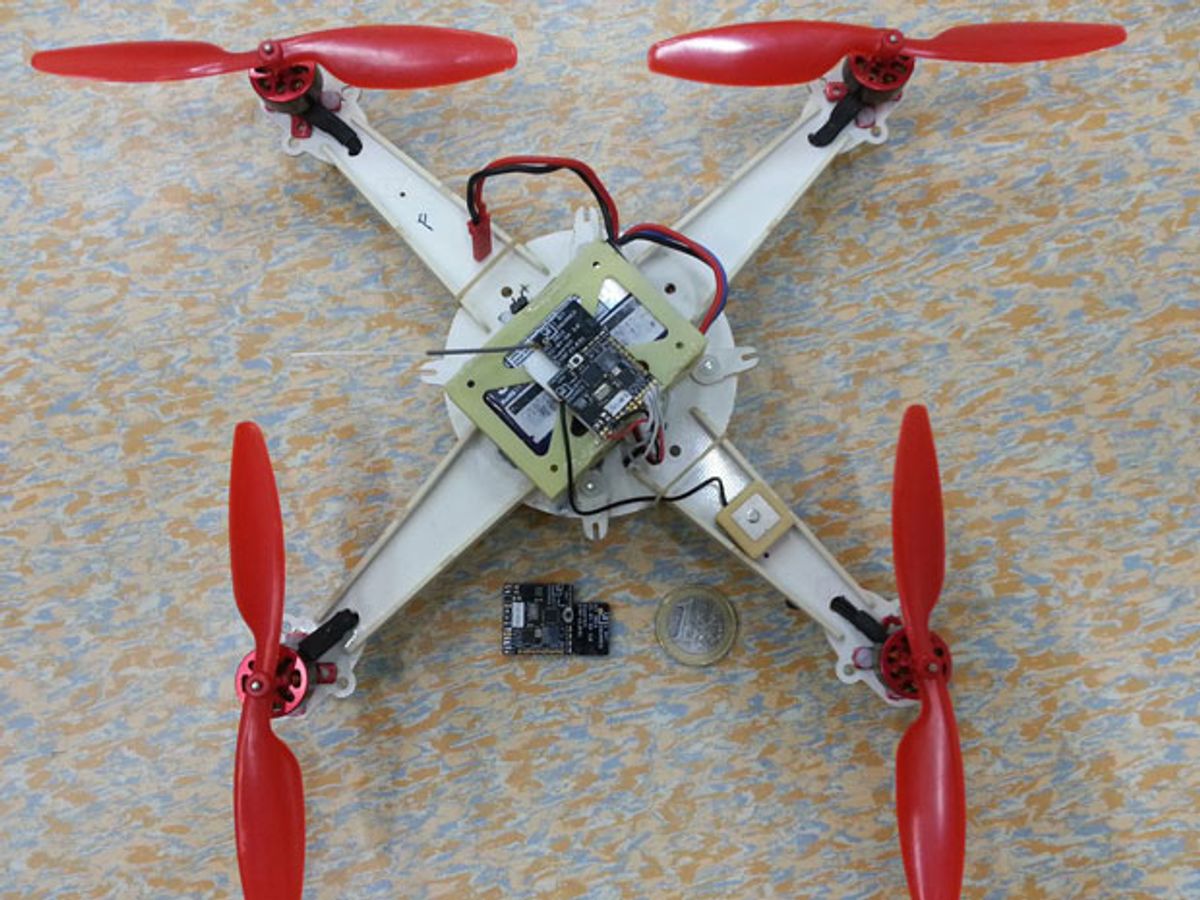Researchers in the Netherlands have designed a thumbnail-size autopilot system that they say is the lightest in the world, at just 1.9 grams. That should free up a fair amount of carrying capacity for the micro air vehicles (MAVs) that may one day serve as the eyes and ears of emergency rescue teams.
"Our dream is that every firefighter carries an MAV in his breast pocket to use for inspections of collapsed or burning buildings, without having to go inside," says Bart Remes, head of the MAV lab at Delft Technical University in the Netherlands. They designed the autopilot, called Lisa/s, on an open-source model to encourage others to play with it and offer their suggestions.
Here's a video of a quadcopter and a tiny helicopter controlled by Lisa/s.
As you can see, the autopilot doesn't send the little craft off on acrobatics or guide them to targets; it just stabilizes their flight. That's "one piece of the puzzle" of autonomous flight, says Sebastian Scherer, a robotics researcher at Carnegie Mellon University. Two other pieces—sensing the environment and planning a route that avoids obstacles—are needed to achieve autonomous flight.
"These kinds of autopilots are very common, however, the size makes it special," Scherer says. "It does not have sensors to make it 'intelligent' or able to avoid obstacles (which is a lot harder). Also, this autopilot can currently fly only outdoors, away from objects."
In next month's IEEE Spectrum, Scherer and his colleague, Lyle Chamberlain, will describe their work on a fully autonomous U.S. Army helicopter designed to evacuate wounded soldiers. But that robo-copter is big and costly, whereas the Delft researchers envisage something tiny and cheap that can buzz through burning corridors, see who's there, and radio for help.
Photo: TU Delft
Philip E. Ross is a senior editor at IEEE Spectrum. His interests include transportation, energy storage, AI, and the economic aspects of technology. He has a master's degree in international affairs from Columbia University and another, in journalism, from the University of Michigan.



